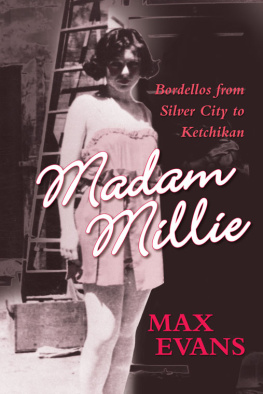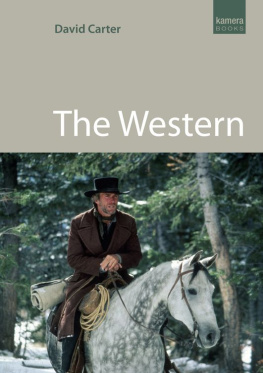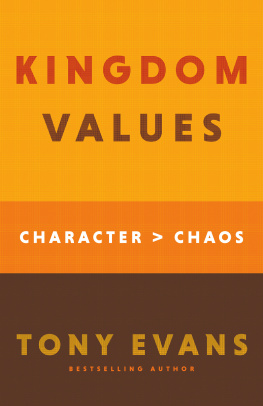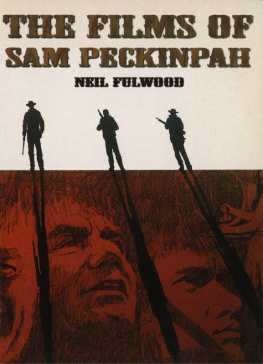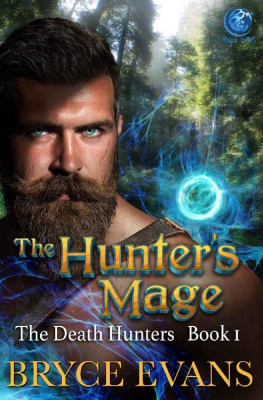Goin Crazy with Sam Peckinpah and All Our Friends

Goin Crazy with
Sam Peckinpah
and All Our Friends
Max Evans
as told to Robert Nott

2014 by Max Evans and Robert Nott
All rights reserved. Published 2014
Printed in the United States of America
19 18 17 16 15 14 1 2 3 4 5 6
The Library of Congress has cataloged the printed edition as follows:
Evans, Max, 1924
Goin crazy with Sam Peckinpah and all our friends / Max Evans with Robert Nott.
pages cm
Includes index.
ISBN 978-0-8263-3587-6 (hardback) ISBN 978-0-8263-3588-3 (electronic)
1. Peckinpah, Sam, 19251984. 2. Peckinpah, Sam, 19251984Friends and associates. 3. Motion picture producers and directorsUnited StatesBiography. 4. Evans, Max, 1924 Friends and associates. I. Nott, Robert, 1960 II. Title.
PN1998.3.P43E83 2014
791.430233092dc23
[B]
2014006332
Cover photograph courtesy Dan Faris.
Contents
Acknowledgments
A book like this would never get completed if not for the contribution of a lot of peoplemost of whom knew and loved Sam Peckinpah, which means they probably wanted to punch him in the nose at least once.
Fern Lea Peter (Peckinpah) patiently and repeatedly gave her time over the phone to recall her relationship with her brother. David Peckinpahs widow, Sandy, helpfully reconstructed the life of her late husband for a vital chapter. A number of actors helped us out along the way too. Among them: L. Q. Jones, who will likely outlive us all, allowed us to build an entire chapter around his relationship with Sam. Morgan Woodward shared his memories of meeting Sam, and actor Seymour Cassel graciously agreed to a phone interview to discuss the ill-fated trip to Colombia that he took with Sam. Hes lucky he got out alive. Thanks to Bo Hopkins, who said Sam gave him his real start with a prime role in 1969s The Wild Bunch. And a special thank-you to the still-beautiful actress, author, and activist Ali MacGraw, who provided commentary and support.
David Weddle, Garner Simmons, and Jeff Slaterall of whom have written important works on Sams life and filmsprovided moral support and gave permission to quote from their works. Garner also gave us permission to use many of the photos he took of Sam on various film sets. Peckinpah historian Dan Faris donated the great and rare cover shot for this bookthank you, Dan! Noted Peckinpah documentary filmmaker Mike Siegal offered photos and support as well. We also received helpful written reviews of the manuscript from film historians Jeff Berg and Richard Gaughran, and one anonymous reader.
We must give a nod to Chalo Gonzlez, who deserves more credit for his work with Sam and more literary space in his own book.
Katy Haber, Sams mistress and right arm through eight years and eight films and his costar through a good part of this memoir, helped us throughout with photos, anecdotes, and connections to others who knew Sam. We cannot thank her enough.
To my wife Pat, who always reviews my work with an eye toward making it better, and who gave this book an exceptional first read before we submitted it to University of New Mexico Press. And many thanks to Santa Fe author Johnny D. Boggs, who sat in on the initial discussion of this project and who provided moral support and protection of the manuscript throughout its development.
From the press we have enjoyed the enthusiastic and sharp-eyed support of editor John Byram, marketing and sales manager Katherine White, and ace copyeditor Nicole Wayland. People like that just dont get thanked enough. We thank them all.
There are no doubt countless others whose names will regretfully come to me after publication. And then there are scores of Sams noted and unknown friends, enemies, and associates whom I have somehow outlived and who thus cannot sue me. Regards to you all.
Ol Max Evans
Albuquerque, New Mexico
April 2014
Introduction
Sam Peckinpah once tried to drown Max Evans. Evans responded by breaking Sams ankle, though in truth Max was aiming for Sams neck. When Max told me he wanted to title his memoir of Sam Goin Crazy with Sam Peckinpah and All Our Friends, I asked Max why Sam seemed to drive everyone around him insaneexcept for Max, who survived it all.
I was crazy before I met Sam Peckinpah, Max explained.
Maybe I was crazy to accept Maxs offer to cowrite his memoir on the late, sometimes great, often mad film director, but I knew I couldnt say no. I had always respected Peckinpahs talent. After working with Max on this book, I came to like Peckinpah, flaws and all.
This is an as told to reflection that allows Max Evans full voice, an extremely personal look at a man who dragged his personal demons with him wherever he went and who was capable of great generosity and cruel indifference. Max told me that Sam was the greatest goddamned paradox in the art world. He may be right.
I can see why the two men liked and admired each other. Max had been a cowboy, a soldier, a smuggler, a painter, and, most importantly, a storyteller. Sam had been a would-be cowboy, a soldier, a would-be smuggler, a director, and, most importantly, a storyteller. They were roughly the same age when they met up early in 1962, and they both achieved success in their respective fieldsPeckinpah in film, Evans in literaturewithin a few years of each other. Perhaps Sam filled the void that the death of Big Boy Hittsona close personal friend of Maxscreated for Max after Big Boy was shot dead by his younger brother in the late 1940s in the beautiful Hi-Lo Country of northeast New Mexico. Black things hovered around him like an invisible sprayfelt but never quite seen, Max wrote of Big Boy in his novel The Hi-Lo Country. The same could be said of Sam Peckinpah. Not surprisingly, it was this book that brought Sam and Max together after the director read it and decided he wanted to option the rights and make it into a film. Sam never quite pulled it off before his death in December 1984, but British director Stephen Frears did bring the book to the screen in 1998.
Maxs story of his friendship with Sam starts in 1962 and ends with the release of that film in 1998. Along the way, youll run into an ensemble of likable lunatics who passedoften as if moving through a revolving doorthrough Sams and Maxs lives, including Lee Marvin, Brian Keith, L. Q. Jones, James Coburn, Burt Lancaster, Ali MacGraw, Steve McQueen, Joel McCrea, Dale Robertson, Stuart Whitman, and a still renowned French actress who appears here in the nude, I am happy to report. Youll also encounter con men, hit men, ladies of the evening, and people whom no one should ever get to know.
Max was born in Ropes, Texas, in 1924. Not long afterward, his mother and father, Hazel and W. B., founded a town called Humble City in New Mexicos far southeastern Lea County. He left here for the Hi-Lo Country of northeastern New Mexico when he was about twelve years old. An infantry veteran of World War II combat, he tackled a number of career options before comfortably settling in as a writer with the 1960 publication of his breakthrough novel, The Rounders (later made into a motion picture starring Henry Fonda and Glenn Ford). Among his other works are: Bluefeather Fellini, War and Music: A Medley of Love, and the acclaimed novellas My Pardner and
Next page

